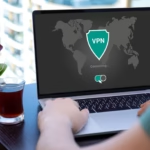Recent Blog
Check on Our Social Media
All Our Blogs
Why Cybersecurity Policies Are Critical for Business Success in 2025: A Complete Guide
Picture this: You wake up tomorrow to find your business computers locked, customer data stolen, and your reputation in ruins. Sound like a nightmare? For thousands of businesses worldwide, this scenario becomes reality every single day.
As we navigate an increasingly connected world, cybersecurity threats have evolved from simple nuisances to sophisticated attacks capable of destroying entire organizations. This is precisely why cybersecurity policies have become the cornerstone of modern business protection. These comprehensive guidelines don’t just prevent attacks—they transform your organization into a digital fortress capable of withstanding even the most advanced cyber threats.
Without proper cybersecurity policies, businesses operate in a state of constant vulnerability, leaving their most valuable assets exposed to criminals who grow more sophisticated by the day.
What Exactly Are Cybersecurity Policies? (And Why Should You Care?)
Think of cybersecurity policies as your organization’s digital rulebook—a comprehensive guide that outlines how employees, partners, and systems should interact with technology safely and securely.
Key components include:
- Access control guidelines – Who can access what information and when
- Password management protocols – Creating and maintaining secure authentication
- Incident response procedures – Step-by-step actions during security breaches
- Data protection standards – How sensitive information should be handled
- Employee training requirements – Regular education on emerging threats
Unlike generic security measures, effective cybersecurity policies are tailored to your specific business needs, industry requirements, and risk profile.
The Business Case: 7 Compelling Reasons Why Cybersecurity Policies Drive Success
1. Protect Your Most Valuable Asset: Data
In today’s data-driven economy, information is currency. Customer databases, financial records, intellectual property, and operational data represent significant value that cybercriminals actively target.
Without proper policies, you risk:
- > Identity theft affecting customers and employees
> Industrial espionage and competitive disadvantage - > Regulatory violations leading to substantial fines
- > Complete business disruption and potential closure
With strong policies in place:
- > Data access is restricted and monitored
- > Encryption protocols protect information in transit and at rest
- > Regular backups ensure business continuity
- > Compliance requirements are consistently met
2. Prevent Financial Catastrophe Through Proactive Defense
The average cost of a data breach in 2025 exceeds $4.5 million globally, with small businesses often facing bankruptcy following major incidents. Cybersecurity policies serve as your first line of defense, preventing attacks before they occur.
Cost-effective protection strategies include:
- > Regular security awareness training for all staff members
- > Multi-layered defense systems with updated firewalls and antivirus solutions
- > Continuous monitoring and threat detection protocols
- > Vendor risk management and third-party security assessments
3. Transform Employees from Vulnerabilities into Security Champions
Human error accounts for approximately 95% of successful cyberattacks. Rather than viewing employees as weak links, cybersecurity policies empower them to become active defenders of organizational security.
Common employee-related risks:
- > Phishing email interactions and social engineering attacks
- > Weak password practices and credential sharing
- > Unsecured remote work environments
- > Unauthorized software installations and downloads
Policy-driven solutions:
- > Comprehensive onboarding security training programs
- > Regular simulated phishing exercises and feedback
- > Clear guidelines for remote work and BYOD policies
- > Incident reporting procedures that encourage transparency
4. Build Unshakeable Customer Trust and Market Reputation
In an era of frequent data breaches, customers actively choose businesses that demonstrate strong security commitments. Robust cybersecurity policies signal professionalism, reliability, and customer-centric values.
Trust-building benefits:
- > Enhanced brand reputation and customer loyalty
- > Competitive advantage in security-conscious markets
- > Improved vendor and partnership opportunities
- > Higher customer lifetime value and retention rates
5. Navigate Complex Regulatory Landscapes with Confidence
Global data protection regulations continue expanding, with significant penalties for non-compliance. Cybersecurity policies ensure your organization meets legal requirements while avoiding costly violations.
Key regulatory frameworks:
- > GDPR (General Data Protection Regulation) – European Union data protection
- > HIPAA (Health Insurance Portability and Accountability Act) – US healthcare data security
- > CCPA (California Consumer Privacy Act) – California consumer data rights
- > India’s Digital Personal Data Protection Act – Indian data privacy requirements
- > SOX (Sarbanes-Oxley Act) – Financial reporting and data integrity
6. Ensure Business Continuity During Crisis Situations
When cyberattacks occur, organizations with established policies respond faster, recover more completely, and suffer less reputational damage. Preparation is the difference between survival and business failure.
Critical incident response elements:
- > Immediate threat containment and system isolation
- > Clear communication protocols for stakeholders
- > Data recovery and system restoration procedures
- > Post-incident analysis and improvement processes
7. Enable Secure Digital Growth and Innovation
Strong cybersecurity policies don’t restrict business growth—they enable it. Organizations with solid security foundations can pursue digital transformation initiatives, cloud adoption, and emerging technologies with confidence.
Real-World Success Stories: Policies in Action
Case Study 1: Manufacturing Company Prevents $2M Loss
A mid-sized manufacturing firm implemented comprehensive cybersecurity policies including employee training and incident response procedures. When attackers attempted a ransomware deployment, trained employees immediately recognized suspicious activity, isolated affected systems, and restored operations from secured backups within four hours. The company avoided ransom payments and maintained customer deliveries.
Case Study 2: Healthcare Provider Maintains Patient Trust
A regional healthcare network with strict cybersecurity policies successfully defended against multiple attack attempts targeting patient medical records. Their layered security approach, combined with regular staff training, prevented any data breaches and actually increased patient confidence in their services.
Essential Elements of Effective Cybersecurity Policies
1. Access Management and Authentication
- > Multi-factor authentication requirements for all systems
- > Role-based access controls limiting data exposure
- > Regular access reviews and privilege management
- Strong password policies with complexity requirements
2. Network and Infrastructure Security
- > Firewall configuration and maintenance standards
- > Secure Wi-Fi and remote access protocols
- > Regular security patching and update procedures
- > Network monitoring and intrusion detection systems
3. Data Classification and Protection
- > Clear data sensitivity levels and handling requirements
- > Encryption standards for data storage and transmission
- > Secure data disposal and retention policies
- > Third-party data sharing agreements and controls
4. Employee Education and Awareness
- > Initial security orientation for new hires
- > Ongoing training on emerging threats and best practices
- > Regular phishing simulation exercises
- > Clear reporting procedures for suspicious activities
5. Incident Response and Recovery
- > Defined roles and responsibilities during security incidents
- > Communication protocols for internal and external stakeholders
- > Technical recovery procedures and backup restoration
- > Post-incident review and policy improvement processes
Personal Cybersecurity: Protecting Yourself in the Digital Age
Cybersecurity isn’t limited to corporate environments. Individuals can implement personal security policies to protect their digital lives:
Essential personal practices:
- > Use unique, complex passwords managed through password managers
- > Enable two-factor authentication on all accounts
- > Keep software and devices updated with latest security patches
- > Exercise caution with public Wi-Fi and unknown email attachments
- > Regularly monitor financial accounts and credit reports
Implementation Strategy: Your Next Steps
Phase 1: Assessment and Planning (Weeks 1-2)
- > Conduct comprehensive security risk assessment
- > Identify critical assets and potential vulnerabilities
- > Research applicable regulatory requirements
- Assemble cybersecurity policy development team
Phase 2: Policy Development (Weeks 3-6)
- > Draft comprehensive policies based on assessment findings
- > Incorporate industry best practices and regulatory requirements
- > Review and refine policies with legal and technical experts
- > Develop supporting procedures and training materials
Phase 3: Implementation and Training (Weeks 7-10)
- > Roll out policies with clear communication and expectations
- > Conduct comprehensive training for all employees
- > Implement technical controls and monitoring systems
- > Establish incident response and reporting procedures
Phase 4: Monitoring and Improvement (Ongoing)
- > Regularly review and update policies based on new threats
- > Conduct periodic security assessments and audits
- > Provide ongoing training and awareness programs
- > Continuously improve based on lessons learned and industry changes
Conclusion: Your Cybersecurity Journey Starts Now
Cybersecurity policies represent far more than compliance documents—they’re strategic investments in your organization’s future. In our interconnected world, the question isn’t whether you’ll face cyber threats, but how well you’ll respond when they arrive.
Organizations with comprehensive cybersecurity policies don’t just survive in today’s threat landscape; they thrive by building customer trust, enabling innovation, and creating competitive advantages through security excellence.
The time for action is now. Every day without proper cybersecurity policies increases your risk exposure and potential impact. Start your cybersecurity policy development today, and transform your organization from a potential victim into a security leader.
Ready to get started? Begin with a comprehensive risk assessment, engage cybersecurity professionals, and prioritize the safety of your digital assets. Your future self—and your stakeholders—will thank you.
References:
https://www.sentinelone.com/cybersecurity-101/cybersecurity/cyber-security-trends/
https://www.comptia.org/en-us/resources/research/state-of-cybersecurity-2025/
https://www.weforum.org/publications/global-cybersecurity-outlook-2025/digest/
Need help developing cybersecurity policies for your organization? Contact us, we can guide you through the assessment, development, and implementation process tailored to your specific needs and industry requirements.
Location
Nashik | Mumbai | Bengaluru | Dallas
contactus@quasarcybertech.com
Call Now
+91 97306 91190
Quick Links
Our Offerings
Copyright 2025 © All Right Reserved | QLeap Education & Trainings






